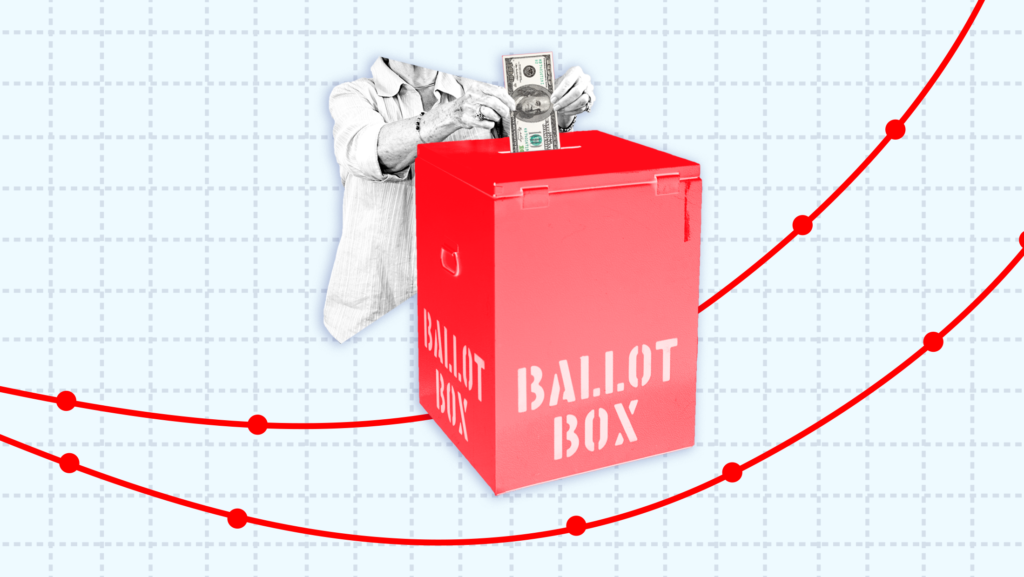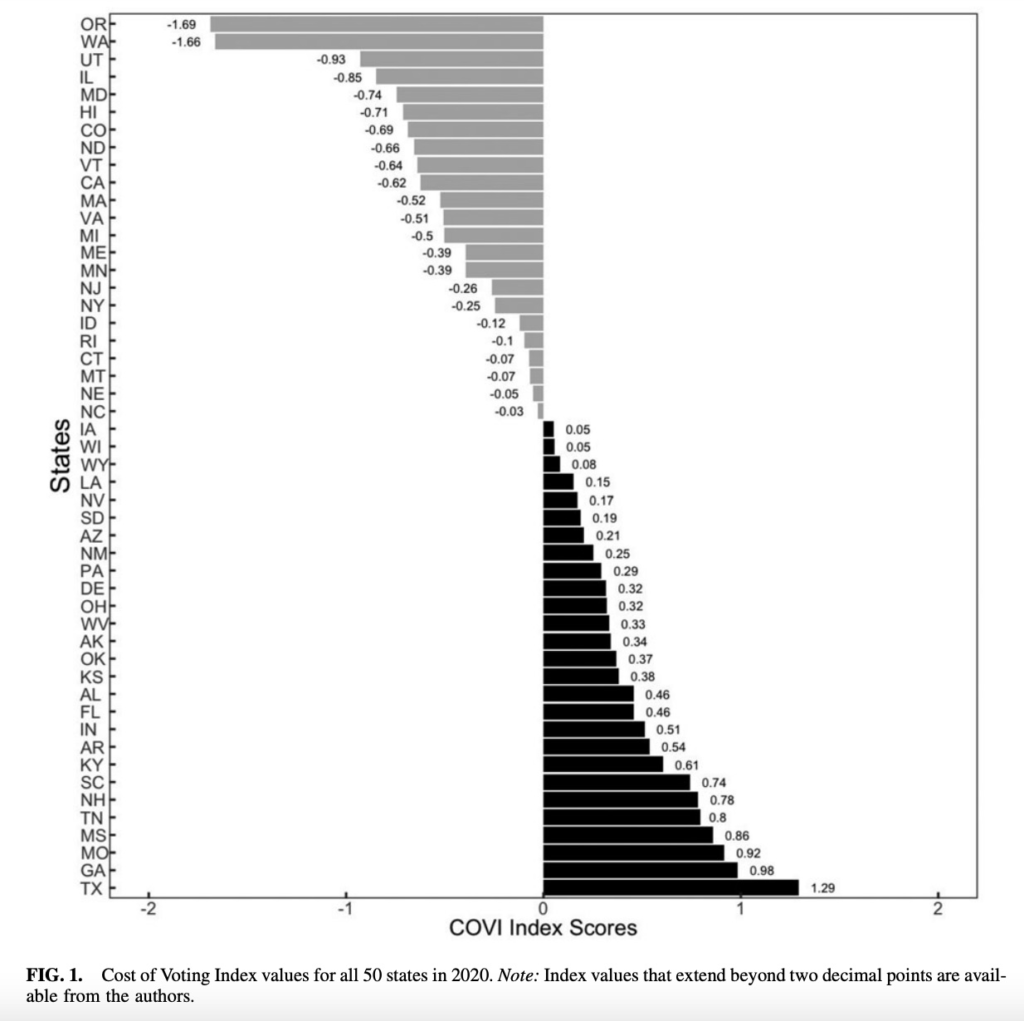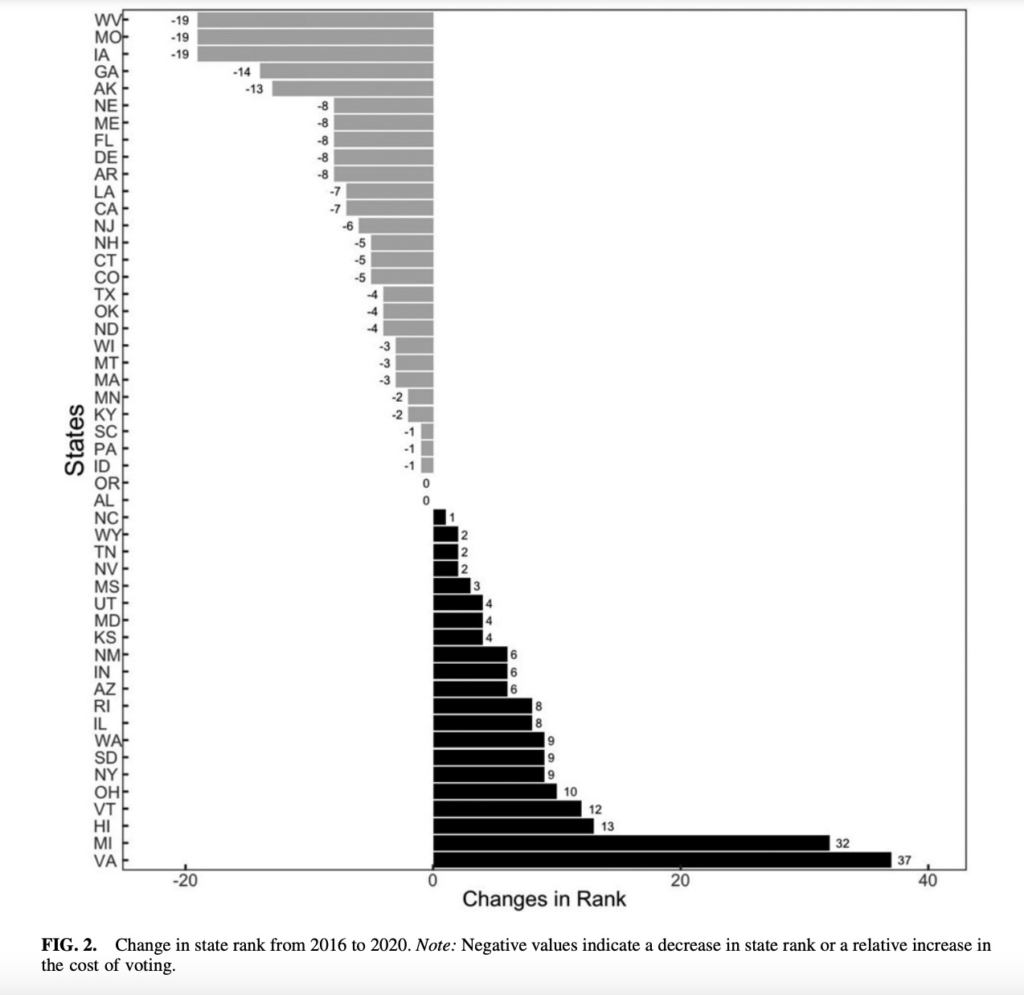The Cost of Voting

The process of voting varies widely across each of the 50 states. With voting laws changing every day, and Republicans in state legislatures introducing a barrage of new restrictions, it can be hard to get an overall picture of how relatively easy or difficult it is to cast a ballot where you live.
So today, we’re looking at a 2020 study from the Election Law Journal that attempts to quantify exactly how much the process of voting “costs” a voter in each of the 50 states. The study, released at the end of last year, updates the “Cost of Voting Index” used by political scientists to determine how restrictive each state’s voting laws were in 2020. In it, the authors Scot Schraufnagel, Michael J. Pomante II and Quan Li draw some important conclusions about how effectively and efficiently states can improve voting access.
The “Cost of Voting” measures barriers to ballot access.
The Cost of Voting Index (COVI) assesses every stage of the voting process — from registration to casting a ballot — and assigns each state a numerical rank based on how many barriers voters are forced to overcome. This is the index that the authors work to update in their 2020 study. They find that there are significant disparities between each of the 50 states, with some voters facing much higher hurdles at the ballot box than others. They also conclude that between 2016 and 2020, the ranking of states changed significantly thanks to some legislatures making it easier to vote.
The web of voting laws in each state is complex — and COVI takes into account all of them when calculating a state’s ranking. In the voter registration process, states are rated based on how early they set their registration deadlines, whether voters can register same day at their polling place, if online registration is available and whether felons are allowed to register while incarcerated or after their release.
The index also considers the organizing infrastructure of voter registration campaigns — whether voter registration drives are allowed (in New Hampshire and Wyoming they are banned), if those hosting them must receive official certification from the state and if 16- and 17-year-olds can pre-register before their 18th birthday. The introduction of automatic voter registration significantly improves a state’s COVI score. Considerations like if a state has strict voter ID laws and how many hours polls are open compared to the national average are also considered in the final rankings.
Finally, the COVI score includes a tally of policies that increase “voting inconvenience” — a laundry list of voter suppression tactics that states use to limit access to the ballot. They include:
- Lack of early voting
- Excuse requirements for absentee voting or no in-person absentee voting
- No permanent absentee voting register
- No mandated time off work for voting, whether paid or unpaid
- A significant reduction in the number of polling stations since the 2012 elections
Here are state rankings from worst to best:
Considering all of these factors, the authors generated the following ranking of state COVI scores. The lower the score, the easier it is for voters to cast their ballots.

These numbers alone may not surprise you. But the shift in state rankings between 2016 and 2020 show how important improving even one of these policies can be for increasing access to the ballot in a state. Virginia moved from its position as 49th most difficult state all the way up to 12th between 2016 and 2020 — thanks to a new Democratic legislature that passed automatic voter registration, designated Election Day as a national holiday and eliminated in-person registration deadlines.
States that fell farthest in the rankings in the years between elections include West Virginia, Missouri, Iowa and Georgia, whose Republican legislatures are still hard at work making it more difficult to vote. And while Democratic legislatures help achieve needed voting reforms, popular referendums also make a huge difference. Michigan, which moved up 32 spots in the state rankings, passed automatic voter registration, no-excuse absentee voting and same-day registration via a 2018 ballot initiative.

“Costs of Voting” can be lowered if politicians want to.
This study makes clear the cumulative effect of each state’s voting laws — but most importantly, it demonstrates that the state of voting access is not static. “What is abundantly clear from the examples of Virginia and Michigan,” the authors write, “is that if a state wishes to make voting more accessible it is entirely possible to do so.” Even one policy change can significantly improve the voting landscape in a state — and that’s why every individual attack from Republicans constitutes a significant threat to ballot access.